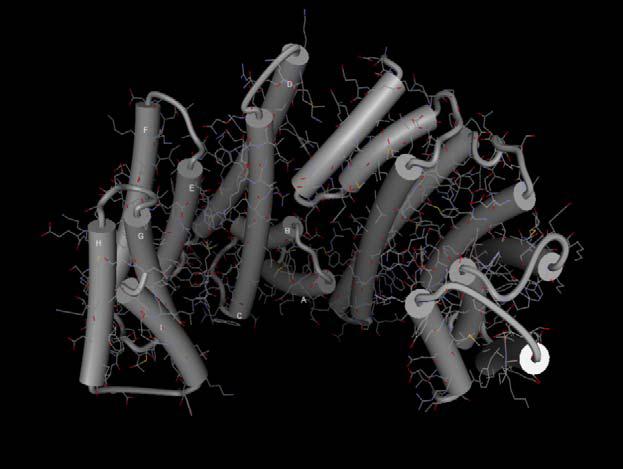LigOpt
Multi-objective ligand design
The protein family 14-3-3 is involved in many signalling networks of the human body. It has different isoforms, some of which are involved in life maintaining functions, others (the gamma isoforms) are part of processes related to alzheimer and cancer. Therefore it is desirable to find a molecule that specifically binds to gamma isoforms but not to the other isoforms of 14-3-3. Peptides are sequences of amino-acids - each amino acid is taken from an 'alphabet' of 18 possibilities. To find optimal sequences force field simulation (evaluation) is combined with multiobjective combinatorial black-box optimization. For short sequences determinstic procedure ILS is used and extended sequences are searched for by multiobjective evolutionary algorithms.
Movie 1: This movie shows how an peptide is optimized in order to minimize the free energie for the 14-3-3 gamma isoform receptor. The algorithm is iterated local search (ILS), the search space is 5 Amino-acid pairs.
Movie 2: This movie shows how a much larger molecule is optimized using an evolutionary algorithm (SMS-EMOA). It uses the central structure found by ILS to initialize and extends it by side chains. The side chains are intended to improve the specificity of the solutions (not binding to other isoforms of 14-3-3 protein).

|
| Figure 1: 3D structure of the protein 14-3-3 gamma. |


